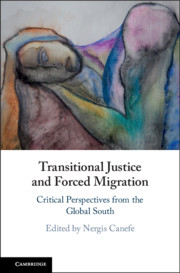Book contents
- Transitional Justice and Forced Migration
- Transitional Justice and Forced Migration
- Copyright page
- Dedication
- Contents
- Contributors
- Preface
- Acknowledgements
- Abbreviations
- In Lieu of an Introduction
- Part I The Past as the Memory of the Future
- Part II Law, Justice, and Hope
- 4 Transitional Justice, Displacement, and the Rights of the Young
- 5 Beyond Agreements
- 6 State-Based Truth Commissions
- 7 The Right of Return in Iraq
- Part III Ethics of Witnessing
- Index
- References
5 - Beyond Agreements
Management Tools to Support Peace Agreements in the Case of Displaced Populations in Colombia
from Part II - Law, Justice, and Hope
Published online by Cambridge University Press: 24 October 2019
- Transitional Justice and Forced Migration
- Transitional Justice and Forced Migration
- Copyright page
- Dedication
- Contents
- Contributors
- Preface
- Acknowledgements
- Abbreviations
- In Lieu of an Introduction
- Part I The Past as the Memory of the Future
- Part II Law, Justice, and Hope
- 4 Transitional Justice, Displacement, and the Rights of the Young
- 5 Beyond Agreements
- 6 State-Based Truth Commissions
- 7 The Right of Return in Iraq
- Part III Ethics of Witnessing
- Index
- References
Summary
In this chapter, I demonstrate that simulation models, and in particular system dynamics models, could be a cheap and efficient way of examining policies that could allow public servants and service providers to learn and evaluate the different scenarios they are facing in delivering transitional justice remedies. In particular, I concentrate on the simulation and resultant evaluation of possible alternatives to be considered in relation to the reparation and restitution of land rights for the victims of forced displacement in Colombia. To this end, this chapter first presents a brief description of the phenomenon of forced displacement in Colombia and its impact on the society as a whole, thus highlighting the nature of the challenge for government institutions in tackling the results of decades-long conflict in the country.
- Type
- Chapter
- Information
- Transitional Justice and Forced MigrationCritical Perspectives from the Global South, pp. 108 - 134Publisher: Cambridge University PressPrint publication year: 2019



